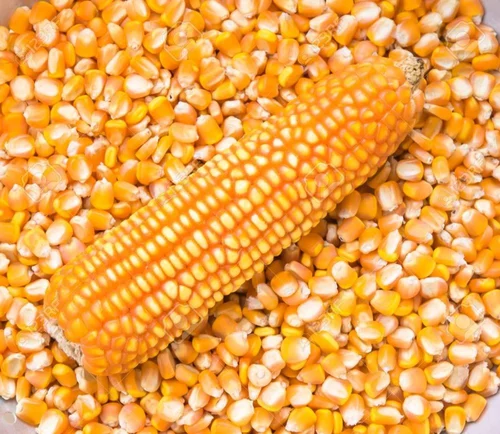White Corn
Quantity: 40seeds+
White corn is a versatile and nutritious variety of corn with a mild, sweet flavor and tender texture. It is used in a wide range of culinary applications, from fresh consumption to ground cornmeal and flour for baked goods. Rich in carbohydrates, vitamins, minerals, and fiber, white corn is a valuable addition to the diet. Its historical significance and cultural importance in various regions further underscore its role as a staple food crop.
White corn, is a variety of corn that is widely cultivated and consumed around the world. Majorly used as a fooder for cattle.
It has a mild flavor and tender texture, making it a versatile ingredient in many culinary traditions.
Here’s an in-depth look at white corn: Appearance Kernels: The kernels of white corn are creamy white and tend to be larger and more uniform than other varieties of corn. They are plump and smooth. Cob: The cobs are typically medium to large, with the white kernels tightly packed in rows. Flavor and Texture Flavor: White corn has a mild, sweet flavor that is less intense than yellow sweet corn. Its subtle taste makes it a versatile ingredient in a variety of dishes.
Texture: The kernels are tender and juicy when cooked, providing a pleasant texture that is softer compared to other corn varieties.
Culinary Uses White corn is highly versatile and used in numerous culinary applications: Fresh: Often boiled or steamed and eaten straight off the cob. It can be seasoned with butter, salt, and other spices.
Grilled or Roasted: Grilling or roasting enhances its natural sweetness and imparts a smoky flavor. Salads and Salsas: Adds a sweet crunch to salads and salsas, complementing other ingredients.
Soups and Stews: Used in soups and stews, white corn provides a sweet flavor and tender texture.
Cornmeal and Flour: Dried white corn kernels can be ground into cornmeal or flour, which is used for making tortillas, tamales, cornbread, and other baked goods. Hominy and Grits: White corn can be treated with an alkali in a process called nixtamalization to produce hominy, which is used in dishes like posole. It can also be ground to make grits, a staple in Southern U.S. cuisine. Nutritional Value White corn is nutritious and provides several health benefits: Carbohydrates: A good source of carbohydrates, providing energy.
Vitamins: Contains vitamins such as vitamin A, several B vitamins, and vitamin E. Minerals: Provides essential minerals like magnesium, phosphorus, and potassium.
Fiber: High in dietary fiber, which aids in digestion and promotes gut health. Antioxidants: Contains antioxidants, though in lower concentrations than colored varieties like purple or blue corn. Growing Conditions Climate: White corn thrives in warm, sunny climates and requires a growing season with consistent temperatures. Soil: Prefers well-drained, fertile soil with good organic content.
Watering: Needs regular watering, particularly during the germination period and when the kernels are developing. However, overwatering should be avoided to prevent root rot.
Planting: Typically grown from seeds, with proper spacing and sunlight exposure to ensure healthy growth. Varieties There are several varieties of white corn, each suited to different culinary uses and growing conditions: Dent Corn: Used primarily for animal feed, cornmeal, and masa (for tortillas and tamales).
Flint Corn: Known for its hard kernels, used in hominy and grits. Sweet Corn: Eaten fresh due to its higher sugar content and tender texture.
Popcorn: Some varieties of white corn are used specifically for making popcorn.
Cultural Significance Historical Importance: White corn has been cultivated for thousands of years, particularly in Mesoamerica, where it was a staple food for indigenous peoples.
Traditional Uses: Integral to many traditional dishes in Latin America, the Southern United States, and other regions.
Cultural Festivals: Often featured in cultural festivals and celebrations, highlighting its importance in agricultural and culinary heritage. Summary White corn is a versatile and nutritious variety of corn with a mild, sweet flavor and tender texture. It is used in a wide range of culinary applications, from fresh consumption to ground cornmeal and flour for baked goods. Rich in carbohydrates, vitamins, minerals, and fiber, white corn is a valuable addition to the diet. Its historical significance and cultural importance in various regions further underscore its role as a staple food crop.
| Weight | 20 g |
|---|







Reviews
There are no reviews yet.